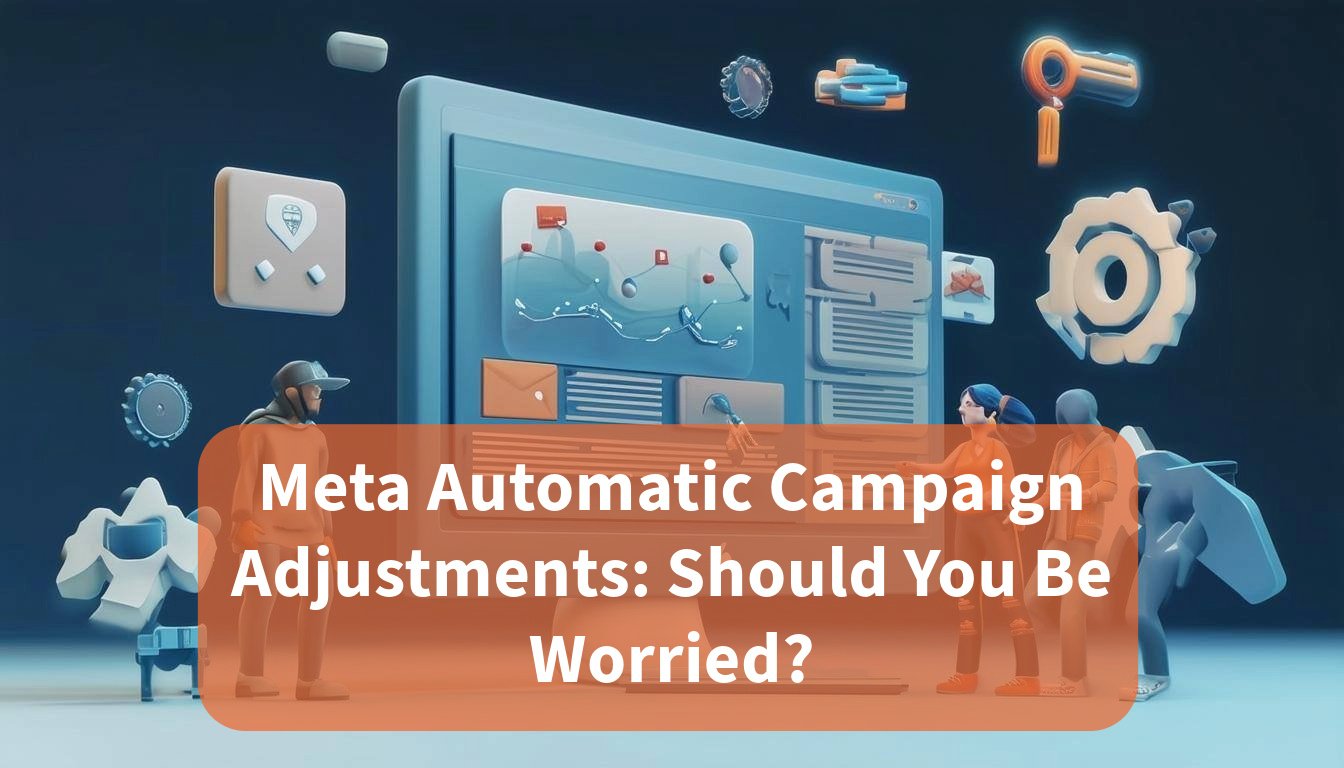Meta quietly rolled out a new feature for ad campaigns – and frankly, it’s causing a bit of a stir in the digital marketing world. You may have already heard whispers of “Meta automatic campaign adjustments.” I’m here to pull back the curtain on what they are, why they might not be as magical as Meta wants you to think, and how these automatic adjustments could potentially harm your campaigns. Let’s face it – running marketing campaigns in today’s landscape is about as straightforward as navigating a maze blindfolded. Between setting budgets, targeting audiences, and crafting compelling ad copy, you’ve got a lot on your plate. That's precisely why Meta’s shiny, new feature – promising to handle the heavy lifting of optimizing your ads with automatic campaign adjustments – can sound oh-so-tempting. But, before you hand over the reins to Meta’s algorithm, it’s crucial to understand both the potential benefits and pitfalls.
The Downside of Automatic Campaign Adjustments in Meta
First, let's address the metaphorical elephant in the room. Meta's measurement can be, simply put, wonky. This matters – a lot – because any automatic adjustments the algorithm makes are based on this potentially inaccurate data. Imagine building a house on a foundation of sand – that's what we’re dealing with here.
Here’s what often happens – Meta struggles to give itself proper credit in the early stages of the customer journey (also known as the top of the funnel). This translates into an incomplete picture of your campaign’s impact. What does this look like on your end? We've seen instances where Meta might underestimate their impact by as much as 4 to 10 times compared to what data from marketing attribution software tells us. Yes, you read that right.
Then, we have the other end of the spectrum – the bottom of the funnel. This is where Meta tends to be overly optimistic about their performance, believing they had a larger role in conversions than they actually did. It's like that friend who always takes a little too much credit for a group project – except this time, it's your ad spend on the line. Meta automatic campaign adjustments might, based on this inaccurate data, funnel more money to strategies that actually aren't as effective as they seem.
When Automatic Campaign Adjustments Work (And When They Don't)
Don't get me wrong, Meta’s heart is in the right place. There’s nothing inherently wrong with seeking to streamline and optimize your campaigns – that's the goal we’re all striving for, right? If their data was accurate and if you could precisely control each variable, then yes – these campaign adjustments could be great. I mean, who doesn't love the idea of automation making our jobs easier?
However, you're trusting your campaign performance to an algorithm working with a somewhat flawed understanding of what's actually working, which isn’t exactly ideal. It becomes a balancing act – you could potentially benefit from some level of automated adjustment, but you absolutely need robust, independent measurement strategies in place first. Think of it as building a house. Before you even consider fancy wallpaper or furniture (which represents Meta automatic campaign adjustments), you need a solid foundation first (that’s where accurate data and multi-touch attribution comes in). This is even more crucial if you’re investing in strategies with longer conversion timelines, as is common with top-of-the-funnel social media efforts.
How to Wrestle Back Control Over Automatic Adjustments
Before you panic, remember that you aren't entirely at the whim of Meta’s algorithm (not yet anyway.). As of this moment, there’s a way to turn off this feature in your business manager settings:
- Login to the Meta Business Manager for your ad account.
- Select “More Tools” from the main menu.
- Click on “Automated Rules.”
- Scroll to “Automatic Adjuster” or “Automatic Adjustments.”
- Look for a toggle button – likely at the top of this section. You want to make sure that it is switched to the off position.
Taking these steps lets you reclaim a sense of control. Otherwise, with Meta’s adjustments turned on, you are allowing them to make big decisions based on data that, for most, just isn't painting a full picture.
Why Measurement Matters
For a moment, imagine stepping on the scale every day to track your weight loss progress. Sounds reasonable, right? Now, imagine if your scale constantly malfunctioned. One day it might tell you you’ve gained five pounds overnight. Another day it declares you've lost ten, even though you’re certain nothing about your habits has changed.
Basing decisions around what the scale tells you – when deep down, you *know* it’s wrong – is setting yourself up for frustration, at best. The same applies to these automated rules from Meta. Relying on this potentially wonky, in-platform data to drive your campaign adjustments? It's the digital marketing equivalent of steering a ship with a broken compass. This is why I urge you, get your measurement right – before even thinking about these automatic campaign adjustments. By utilizing marketing attribution models customized to your brand, sales cycle, customer journey and all those nuanced factors that make your business stand out, you are, in essence, buying yourself a brand-new compass that actually points you in the right direction.
Until you get that handled, approach these automatic adjustments with extreme caution – your budget (and your sanity) will thank you later.
FAQ
What is the main risk of using Meta automatic campaign adjustments?
The main risk is that the algorithm makes budget and targeting decisions based on Meta's often "wonky" or inaccurate in-platform data, which can over-credit bottom-of-funnel conversions and under-credit top-of-funnel efforts, leading to misallocated ad spend.
How can I turn off Meta automatic campaign adjustments?
You can turn off this feature by logging into Meta Business Manager, navigating to "More Tools," selecting "Automated Rules," finding "Automatic Adjuster" or "Automatic Adjustments," and ensuring the toggle is switched to the off position.
Why is accurate measurement more important than automatic adjustments?
Accurate measurement, especially using independent multi-touch attribution software, provides a solid foundation (a "new compass") for your decisions. Without it, automatic adjustments are based on flawed data, which is like steering a ship with a broken compass.
Conclusion
Change in the marketing world, especially within Meta, is about as constant as the tides. Remember, however, just because there’s a flashy new feature – whether that's Meta automatic campaign adjustments or something even newer – doesn’t mean it’s right for your campaigns at this exact moment in time. UPDATE: Since this feature was rolled out, Meta has doubled down on automation with its Advantage+ suite and a push for campaign consolidation. While this can be beneficial, it dramatically amplifies the need for external, reliable attribution. The more you trust Meta's AI to optimize, the more critical it is that you have a second source of truth (like Wicked Reports) to ensure their "optimization" is actually driving profitable, full-funnel results, not just increasing in-platform clicks.
Until the day Meta gets their data situation totally buttoned up (and from everything I’m seeing, that’s not going to be anytime soon) stay informed, question everything, and prioritize what matters most: getting a clear, accurate picture of your performance metrics, regardless of what Meta’s algorithm *thinks* is happening.




